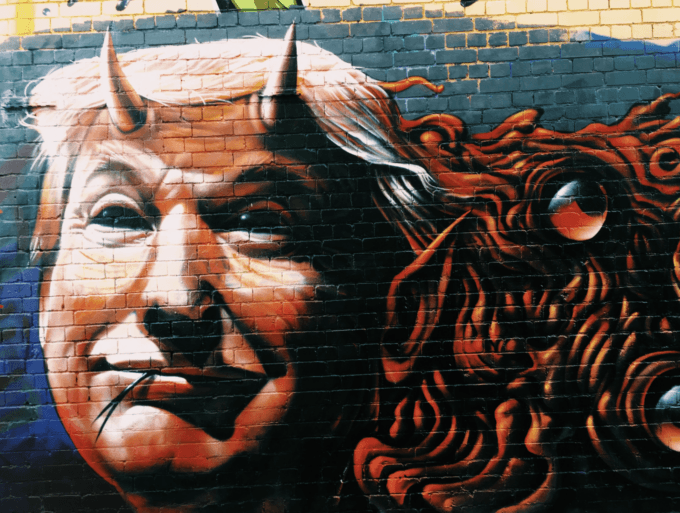Cuba Perseveres Amidst Hurricanes, Blackouts, and US Hostility
 \
\Despite facing a barrage of challenges – from devastating hurricanes to crippling US sanctions – the Cuban people persist in their revolutionary spirit and socialist principles. As the National Education Union’s Robert Poole witnessed first-hand, Cuba’s achievements in healthcare, education, and international solidarity are a testament to their resilience in the face of relentless imperialist aggression.
Cuba has not been having an easy time of it these past few years. First, a series of devastating hurricanes battered the island. Then came the large-scale blackouts that plunged much of the country into darkness. And now, the election of Donald Trump in the United States has ushered in a new era of hostility between the two nations.
Under President Obama, relations between the US and Cuba had begun to thaw. But with Trump’s victory, that progress quickly unravelled. In his first term, Trump designated Cuba as a “state sponsor of terror” – a dubious designation related to Cuba’s role in the peace process in Colombia. He also piled on over 200 additional economic sanctions, further tightening the screws on the Cuban people.
It’s important to note that the situation has remained icy even under the Biden administration. None of the Trump-era sanctions have been lifted, and the two countries’ relations have continued to fester.
The US sanctions are doing exactly what they are intended to do: cause pain and misery for the Cuban people. This economic blockade is nothing short of genocidal, affecting the elderly, the young, and the infirm the most. US officials have been startlingly candid about the purpose – to create civil unrest in the hope of toppling Cuba’s socialist government and allowing American businesses to resume their exploitation of the island.
Prostitution, gambling, and the virtual slavery of the working classes would be allowed to recommence. The gangster playground would reopen, elections would be bought and sold, and Cuba would once again become the property of the US government.
Yet despite all of these immense hardships, Cuba clings to its socialist principles and revolutionary spirit. The country has achieved remarkable successes, prioritising healthcare, education, sports, and the arts – the very things the British government has decimated over the past decade and a half.
Not only do the Cuban people survive under these harsh conditions, but they also use what they have to support other countries. The Cuban president recently led a march in solidarity with the people of Palestine, another victim of imperialism. The government has even provided 250 scholarships for Palestinian students to study medicine in Cuba.
During the COVID-19 pandemic, Cuba was one of the only countries to take in sick passengers from cruise ships. And they sent their renowned medical brigades around the world to support doctors in places like Italy.
Basic supplies are desperately needed in Cuba – food, medical equipment, educational resources. That’s why the National Education Union (NEU) sends a delegation of its members to the island each year, in collaboration with the Cuba Solidarity Campaign. This year, I was honoured to be part of that delegation.
Twenty-seven NEU members arrived in Cuba with suitcases packed full of material aid – 17 braille typewriters, 15 violins, power banks, pens, paper, art supplies, and more. The gratitude from Cuban educators was palpable. The principal of a school for children with special needs in Pinar del Rio explained that the steady stream of braille typewriters from successive NEU delegations now means visually impaired students can attend school two years earlier.

The delegation’s second purpose was to learn from Cuba’s exceptional education system. Literacy rates in Cuba stand at 99% – a stunning achievement compared to the 61% rate in neighbouring Haiti, a country that has never been able to throw off the yoke of imperialism.


This literacy campaign can trace its roots back to the Cuban “Year of Education,” when Che Guevara and Fidel Castro sent out literacy brigades into the rural areas. Before this, education had largely been the preserve of the middle and upper classes, concentrated in the cities and run by the church.
We visited the National Museum of the Literacy Campaign in Havana, which holds artefacts and archives of the numerous brigades of students, teachers, and workers who volunteered to take part. The youngest teacher was just 8 years old, and many educators were tragically murdered by CIA-backed terrorists.
The Cuban people’s resilience in the face of such immense adversity is truly inspiring. As they continue to defy the US empire and uphold their socialist ideals, it is our duty to stand in solidarity with our comrades in Cuba. Only through unwavering international support can they overcome the devastating impact of the US blockade and chart their own path forward.
The struggle of the Cuban people is our struggle. By supporting the Cuba Viva appeal and joining the Cuba Solidarity Campaign, we can all play a part in breaking the chains of this illegal blockade and building a better future for our Cuban brothers and sisters. Their fight for self-determination is a fight for us all. ¡Venceremos!
- Robert Poole is a teacher, union rep, assistant district secretary for Bolton NEU and editor of the journal Education for Tomorrow.
- Robert will be speaking at the Bolton Socialist Club on Friday, November 29 at 7:30 pm. Entry is free, but donations towards the medical aid appeal are welcome.
- You can follow the Cuba Solidarity Campaign on Facebook, Twitter/X and Instagram.



